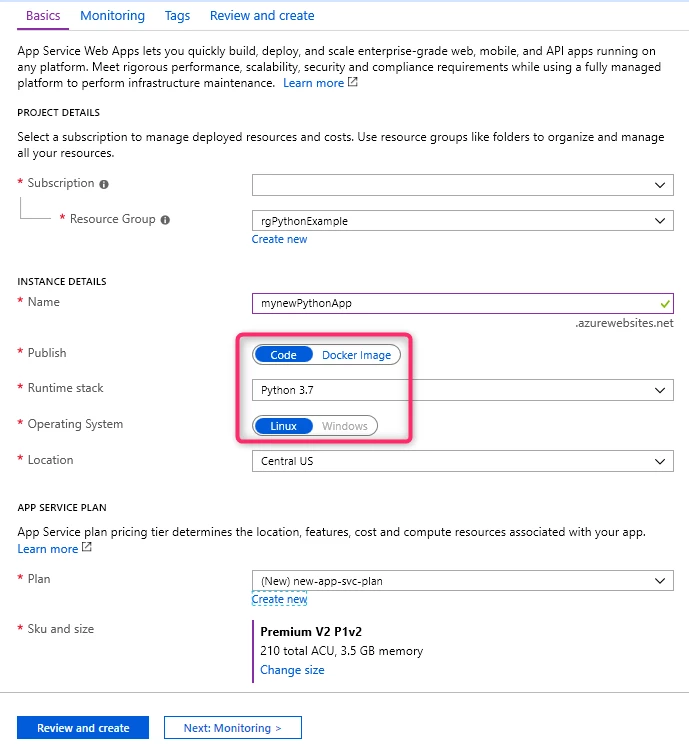Web applications continue to be at the center of business-critical applications for many Azure App Service customers, whether it’s helping migrate existing applications into the cloud or innovate by adding new functionality to delight end-users. We recently celebrated a couple of important milestones for Azure App Service, crossing the mark of over 2 million applications and websites hosted on Azure App Service and 550,000 monthly active customers. Our recent customer success story with LaLiga media and entertainment company from Spain illustrates some of the amazing work our customers are doing leveraging Azure App Service and Cognitive Services or AI to build truly engaging experiences.
We’re excited to share new capabilities for Azure App Service, especially those that focus on enabling a richer set of applications, both Microsoft stack and open source, to be hosted efficiently on our platform-as-a-service.
- Build, deploy and run Node.js, Python, and PHP apps using the perpetually Free Tier with App Service on Linux!
- Python (3.7, 3.6, 2.7) support Linux is now generally available.
- Java 11 is now available on Windows and Linux.
- A new intrinsic build system on Linux handles resolving and installing Node.js and Python package dependencies as well as running custom build scripts.
- Linux workloads requiring secure access to virtual network connected resources, App Service on Linux supports back-end virtual network integration (preview).
- New full screen creation experience in the Azure portal.
Free Tier
Experimentation and exploration are how curious developers try out cloud-based development. With the new Free Tier, developers can easily experiment using App Service on Linux without ever worrying about paying a bill. Using the Free Tier is as easy as selecting the Free SKU when initially creating a new web application.

Details on the compute resources and options available when running on the Free Tier can be found on the Azure subscription and service limits page.
Python general availability and new build system
App Service on Linux introduced expanded Python support a few months ago, and now Python versions 3.7, 3.6 and 2.7 are generally available. Combined with the new build system for App Service on Linux, its easier than ever for Python and Node.js developers to quickly deploy and run their apps on Azure. The new build system automatically resolves package dependencies using yarn or npm for Node.js apps, and pip for Python apps. The build system also supports customizations such as automatically collecting static files for Python apps, as well as running pre and post-build scripts for both Node.js and Python apps. At runtime, App Service on Linux will run Node.js apps with npm start while Python apps run using Gunicorn, including support for WSGI frameworks such as Django and Flask. Find out more on the configuration options and available customizations for the new build system.
Java 11 general availability for both Linux and Windows
Java 11 is now available for both Linux and Windows App Service. Developers can run JAR files on Java 11, or WAR files on Tomcat 8.5 and 9.0, also using Java 11. With Java 11, App Service on Linux now supports the two latest LTS versions of the Java runtime, and App Service on Windows supports the three latest LTS versions. Microsoft will support Java 7 until July 2023, and Java 8 until March 2025, and Java 11 until September 2026. This means Azure customers can explore the API changes and adopt new versions of Java at their own pace. Try Java on App Service today and see the Java developer guide for more details.
UX updates for application creation
Developers want an easy experience to get up and running on App Service, but with an ever-expanding universe of features, they don’t want to be overwhelmed with screen clutter. The new App Service full screen creation experience in the Azure portal takes advantage of increased screen real estate to guide developers through smart defaults while cleanly presenting additional customization options and real-time feedback on creation progress.
The new experience presents all the available options for both code and container-based deployments on App Service, with the choice of runtime stacks dynamically adjusting to match the selected publishing and OS choices.

After a developer walks through the customization UX, optionally adding Application Insights to their application as well as configuring ARM tags, they are presented with a summary of their choices.

While the application is created, the new UX experience shows a real-time view of the provisioning process. After provisioning is complete, developers can see the intermediate steps that occurred as well as a convenient link to jump to the newly provisioned application.

Login to the Azure portal today and get started creating new apps on App Service.
Virtual network integration preview for App Service on Linux
App Service on Linux introduces the preview of back-end virtual network integration for the public variant of App Service on Linux. Applications running in the Standard or Premium v2 tiers can now connect to virtual networks using the new preview virtual network integration feature. Once connected to a virtual network, this feature enables Linux applications to communicate with other resources connected to the same virtual network. This includes resources reachable via Express Route or Site-to-Site VPN and other Azure platform services secured via Service Endpoints including Azure Database for MySQL server and Azure Database for PostgreSQL server.

Find out more information about the new virtual network integration feature.
Next steps
Try Azure App Service for yourself.
